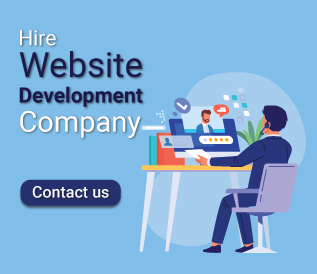Are you dreaming of building your eCommerce store? Well, you are not alone. In today’s fast-growing world of digitalization. There are so many businesses out there, and standing out with unique identifiers is challenging. This is where custom eCommerce development comes into play. It refers to a brand building its custom online store that matches its brand identity uniquely rather than generic online stores.
As we are shifting towards 2025. The demand for a more personalized shopping experience has arisen. Businesses can implement unique features, customized branding, and advanced analytics to enhance customer satisfaction and boost sales.
From small startups to giant brands, they all are now focusing on custom solutions to stand out from the competition.
However, custom eCommerce development involves several factors and challenges that many businesses may not be aware of.
That’s why, In this guide, we’ve covered everything about custom eCommerce development, its importance, key features, benefits, steps to build a custom eCommerce website, and emerging trends to consider.
By the end of this guide, you’ll understand the need for custom eCommerce development, its benefits, and how you can build your custom store to stand out.
Table of Contents
ToggleWhat is Custom eCommerce Development?
Custom eCommerce development means building an online store. A store that is tailored to a specific business’s needs. Instead of using ready-made templates. These custom eCommerce websites are built from scratch or highly customized. It may include unique features, branding, and functionality.
Why is Custom eCommerce Development Crucial for Your Businesses?
Here is why customization is important:
Enhanced User Experience
Customization allows businesses to offer personalized recommendations. It leads to higher engagement and customer loyalty.
Improved Customer Satisfaction
When customers receive relevant product suggestions based on their preferences, they feel valued. This leads to greater satisfaction and encourages repeat purchases.
Increased Sales and Revenue
Did you know? 91% of consumers are more likely to shop when they get personalized recommendations. Personalized offers and recommendations match customers’ interests. And it increases the chances of a purchase. This helps boost conversion rates and the average order value.
Competitive Advantage
A tailored shopping experience helps businesses stand out in a competitive market. Customization shows a commitment to understanding customer needs. It makes the brand more appealing.
Building Brand Loyalty
Customization strengthens the connection between customers and brands. Personalized emails, exclusive discounts, and recommendations encourage long-term relationships.
Better Use of Data
By analyzing customer behaviour and preferences. Businesses can improve their marketing strategies and offer a more personalized shopping experience.
Key Features of Custom eCommerce Websites
Here are some essential features of a custom eCommerce website:
User-Friendly Navigation
A custom eCommerce website allows customers to find what they need easily. Clear menus, simple categories, and a search bar with suggestions. It helps shoppers browse quickly. Filters like price, color, and brand make searching even easier. So it ensures a smooth shopping experience.
Responsive Design
People shop on different devices. Some use phones or computers. A responsive website makes sure it works well on all screens. This increases the chances of a sale.
Advanced Product Search and Filtering
When thousands of products are there, finding the right one can be hard. A smart search bar and detailed filters can help customers quickly find a product. You can also add Sorting options like ‘Best Sellers’ or ‘New Arrivals’, which makes shopping easier.
Personalized Recommendations
You can show customers products they might like. Based on their past searches and purchases. It makes shopping more enjoyable.
Seamless Checkout Process
A complicated checkout process can make customers leave without buying. You should keep a simple and quick checkout. You can add easy payment options, auto-filled details, and a guest checkout. It helps shoppers complete their purchases smoothly.
Multiple Payment Options
People prefer paying as per their suitable method. You can offer multiple options. Some of them are credit/debit cards, digital wallets (PayPal, Apple Pay), and “Buy Now, Pay Later” services. It makes it easier for customers to complete their purchases.
Order Tracking and Notifications
Customers want to track their orders. You can send updates via email, SMS, or notifications. It builds trust and reduces customer questions.
Excellent Customer Support
Shoppers have questions or issues. Having customer support through live chat or email ensures they get answers quickly. Good support improves customer satisfaction and encourages repeat purchases.
Scalability and Customization
As a business grows, its website should increase, too. A good eCommerce site should be easy to update with new things. Customization allows businesses to create a unique shopping experience that matches their brand.
How to Build a Custom e-Commerce Website?

Here are the simple steps to build a custom eCommerce website:
Step 1: Define Your Goals and Objectives
First, figure out what you want to achieve with your website.
- Do you want to increase online sales?
- Reach more customers?
- Build brand trust?
Defining clear goals clearly. It helps you make better decisions. Some of them are about your design, features, and marketing. Otherwise, you may waste time and money on unnecessary features.
Step 2: Choose the Right Platform
Your website platform is like the foundation. You need a strong one to build on. There are many eCommerce platforms, each with its benefits.
- Shopify: It is Best for beginners. It is easy to set up and has built-in tools.
- WooCommerce: It is Ideal for WordPress users who want more customization.
- Magento: It is Great for large businesses. Who needs advanced features and scalability.
You should choose a platform that fits your budget and business goals.
Step 3: Hire an Experienced Web Development Firm
Hiring a professional team can save you time. Plus, it ensures your site is built correctly. Look for a company with experience in eCommerce. Check their portfolio, read client reviews, and ask about their expertise. Investing in the right team can prevent costly mistakes.
Step 4: Design and Develop Your Website
This is where your vision comes to life. Your website should look great and easy to use. Plus, a clean layout and a simple checkout process will make shopping enjoyable. Focus on user experience. Try to make it effortless for visitors. So they can find what they need and complete their purchases smoothly.
Step 5: Optimize for SEO
SEO helps your site rank higher on Google. So that more people can discover your products. Use the right keywords in product descriptions, write clear and engaging content, and ensure your site loads quickly. Do not forget mobile-friendliness because most shoppers use their phones for online shopping.
Step 6: Set Up Analytics
Analytics tools like Google Analytics track visitors, showing where issues come from and how long they stay. This data helps you make smart decisions, such as which products to promote, where to improve, and how to increase sales.
Step 7: Test and Launch
Before you launch, test everything. Check if links work, if products display correctly, and if the checkout process runs smoothly. Test on different devices and browsers to ensure a seamless experience. Fix any issues, gather feedback, and only then go live. A smooth launch makes a great first impression!
Step 8: Maintain and Update
Your website is never finished. It is an ongoing thing. You should regularly update it to keep it fresh and secure. Add new products, update content, fix bugs, and improve features based on customer feedback. A well-maintained site keeps customers happy and coming back for more.
Benefits of Custom eCommerce Development Services

Here are some key benefits of custom eCommerce app development:
Uniqueness and Brand Identity
A custom website makes your business stand out. You can design it exactly how you want. And you can use your brand’s colors, logo, and style. This helps customers recognize and remember your business. It makes them more likely to trust your brand.
Full Control Over Functionality
You can decide how everything works. You can add features that suit your business, such as custom product filters, easy checkout, or special payment options. Unlike ready-made templates, a custom site gives you complete control over your store.
Personalized User Experience
A custom eCommerce site should suggest relevant products and create a shopping experience based on their interests. This makes shopping easier and keeps customers coming back.
Time-Saving Solutions
A custom website can automate many tasks. Some of them are updating orders, managing stock, and handling customer support. This means less manual work for you and more time to focus on growing your business. It also reduces errors and makes everything run smoothly.
Scalability and Flexibility
An eCommerce site should expand as your business grows so that you can easily add new products, features, and services without any restrictions. Unlike basic website templates, a custom site is flexible and ready to support your business.
Key Factors to Consider When Developing an e-Commerce Website
Here are the key things you need to focus on:
1. Understand Your Target Audience
Know who your customers are. It includes their age, interests, shopping habits, and preferences. This helps you design a website that meets their business needs.
2. Choose the Right Platform
Pick an eCommerce platform that fits your business needs. Shopify, WooCommerce, and Magento are popular choices.
3. Focus on User Experience (UX)
Make sure your website is easy to use. Ensure smooth navigation, fast-loading pages, and a simple checkout process. A good UX keeps customers happy and encourages them to buy.
4. Secure Payment Options
Offer multiple safe payment methods. Some of them are credit/debit cards, digital wallets, and UPI. Using trusted payment gateways builds customer trust and ensures smooth transactions.
5. Use SEO and Marketing Strategies
Optimize your website for search engines. So that customers can find your products easily. Use the right keywords and backlinks. Promote your store via social media and ads. It helps you attract more buyers.
6. Maintain and Update Your Website
You should regularly update your website. Try to fix issues and improve security so that your website keeps running smoothly. Offer customer support through live chat, email, or phone to assist buyers and build trust.
Technologies in Custom eCommerce Website Development
Here are some of the latest technologies shaping the eCommerce world:
1. Blockchain for Security and Trust
Blockchain technology makes online transactions safer. It protects customer data and ensures transparency. Plus, it helps prevent fraud and makes shopping more secure.
2. Voice Commerce for Hands-Free Shopping
More people are using voice assistants, such as Amazon Alexa and Google Assistant. They are used to search for products and place orders. Voice commerce allows customers to shop using simple voice commands. It makes the process faster and more convenient.
3. Chatbots for Instant Customer Support
AI Chatbot Development helps answer customer questions in real time. There’s no need for human support. They provide quick responses, assist with orders, and offer personalized recommendations. It makes shopping smoother and more enjoyable.
Exploring Trends in Custom eCommerce Website Development
Here are some key trends making an impact:
1. Augmented Reality and Virtual Reality
AR and VR help customers see products more interactively. So shoppers can try on clothes or furniture virtually. It makes online shopping more engaging.
2. Social Media as a Sales Platform
Platforms like Instagram and Pinterest allow businesses to sell directly through shoppable posts. This allows brands to reach more customers.
3. AI and Machine Learning
AI Solutions and ML analyze customer behavior, which is used to suggest products based on their interests. This creates a personalized shopping experience. It leads to higher customer satisfaction and more sales.
4. Progressive Web Apps
PWAs offer an app-like experience on websites. They load quickly and send push notifications. It makes them a great choice for businesses that want a seamless experience on all devices.
5. Responsive Design
More people shop on their phones. A responsive design ensures that the website works well on all devices.
How Much Does a Custom eCommerce Website Development Cost?
The average cost of building a custom eCommerce website ranges between $5,000 to $250,000. However, its costs can vary based on several factors. Some of them are the complexity of the website, the features required, the platform, and the level of customization involved.
Why Choose DreamSoft4U For Custom eCommerce Development?
DreamSoft4U is a leading custom eCommerce development company. With over 20 years of experience, we are delivering tailored solutions for businesses. We have a team of skilled developers who offer software development services. They will understand your unique business needs and provide a top-notch solution at an affordable price. Get in touch with our experts today.
Want to build a custom eCommerce website for your business?
We have a team of developers who can offer a cost-effective solution.
Conclusion
Overall, Custom eCommerce development helps businesses create a unique online store that fits their needs and goals. It’s a way much better way for businesses to stand out than generic online stores. Custom stores have special features, scale as they grow, and maintain full control over design and functionality. We hope this guide helps you understand the role of a custom eCommerce website and why it’s worth investing in custom development for your long-term success. Now, it’s your turn to find an experienced eCommerce development company and let the professional build your custom eCommerce store within budget and on a timeline.
FAQs
Q1. How long does it take to develop a custom eCommerce website?
It depends on the features and complexity. But it can take anywhere from a few weeks to several months.
Q2. What kind of support is provided after the website launch?
Most developers offer ongoing support, including updates and security fixes. It helps with any issues that come up.
Q3. What are the benefits of custom eCommerce development?
You get a unique, fully customized store that fits your brand, scales as you grow, and offers better security and user experience.
Q4. Is custom eCommerce development suitable for small businesses?
Absolutely! It helps small businesses stand out, attract customers, and grow.
Q5. What security measures are implemented?
Strong security measures like HTTPS, secure payments, user authentication, and regular updates keep your store and customer data safe.























